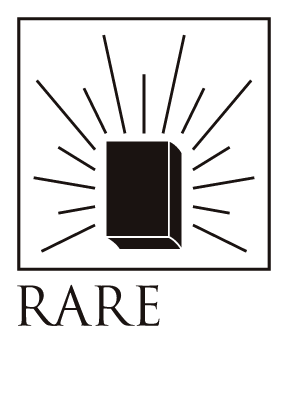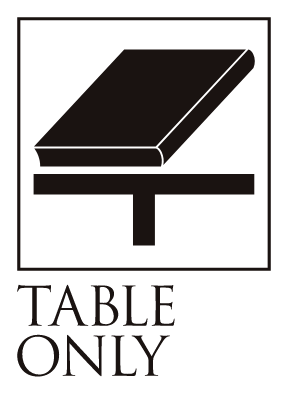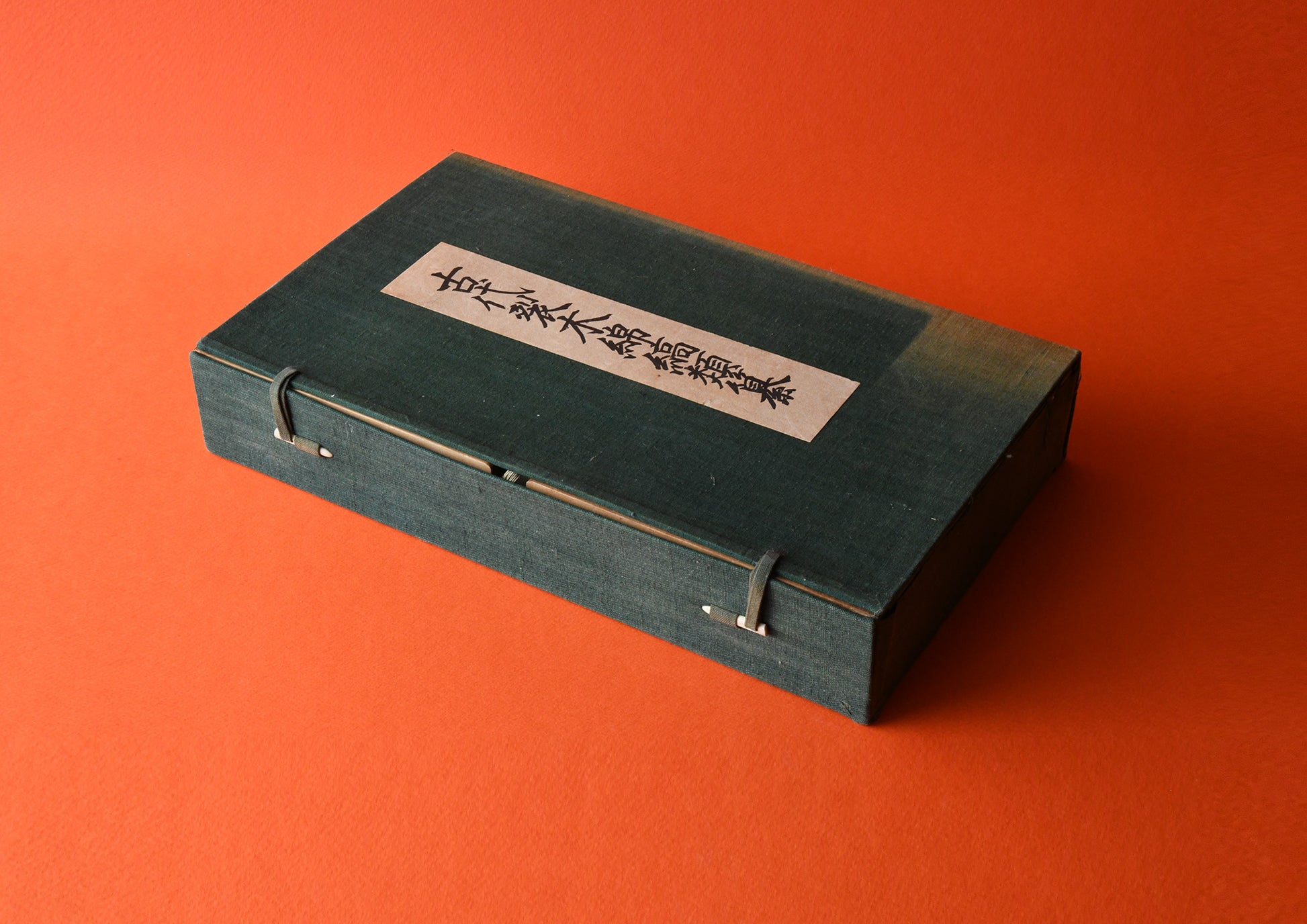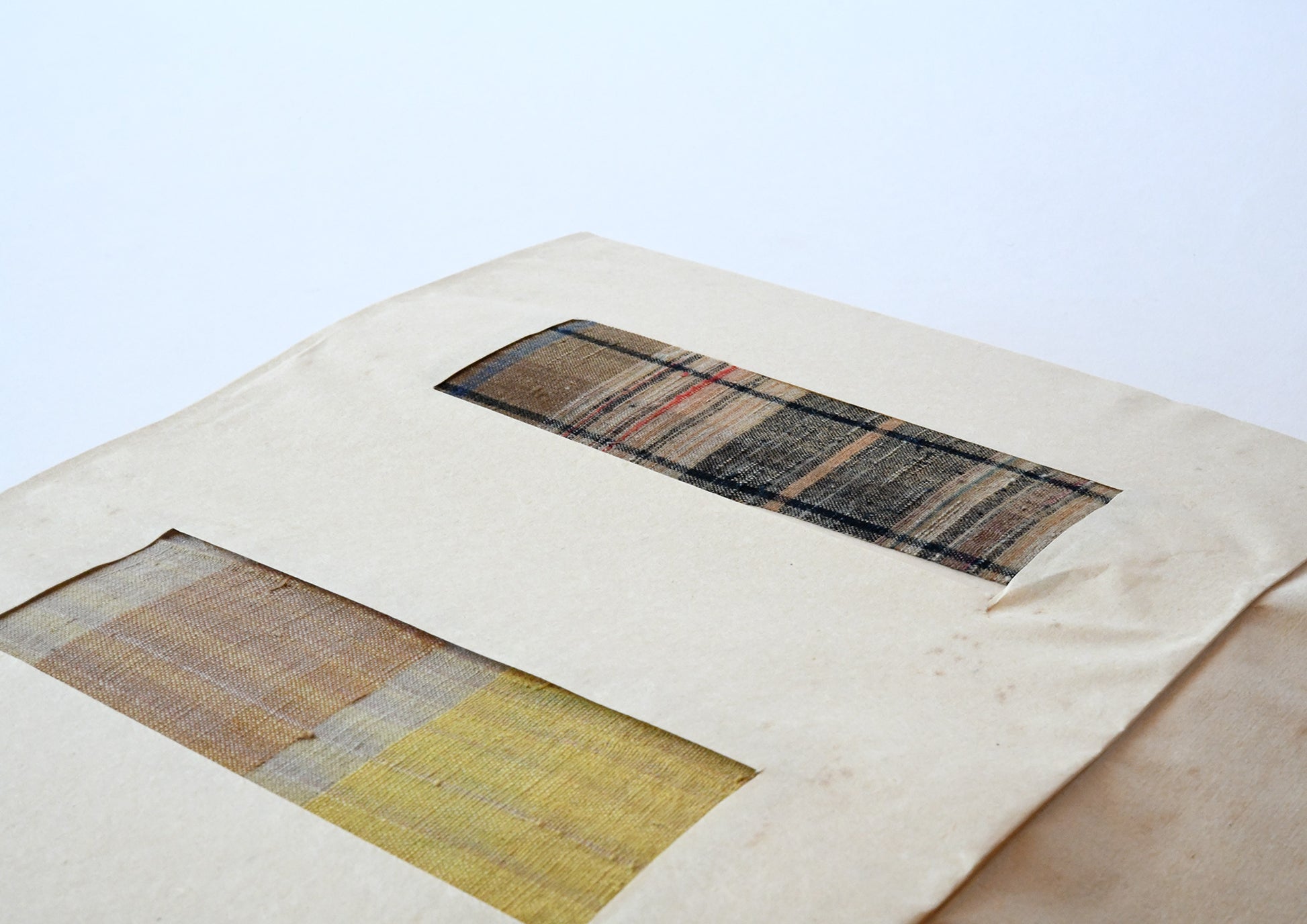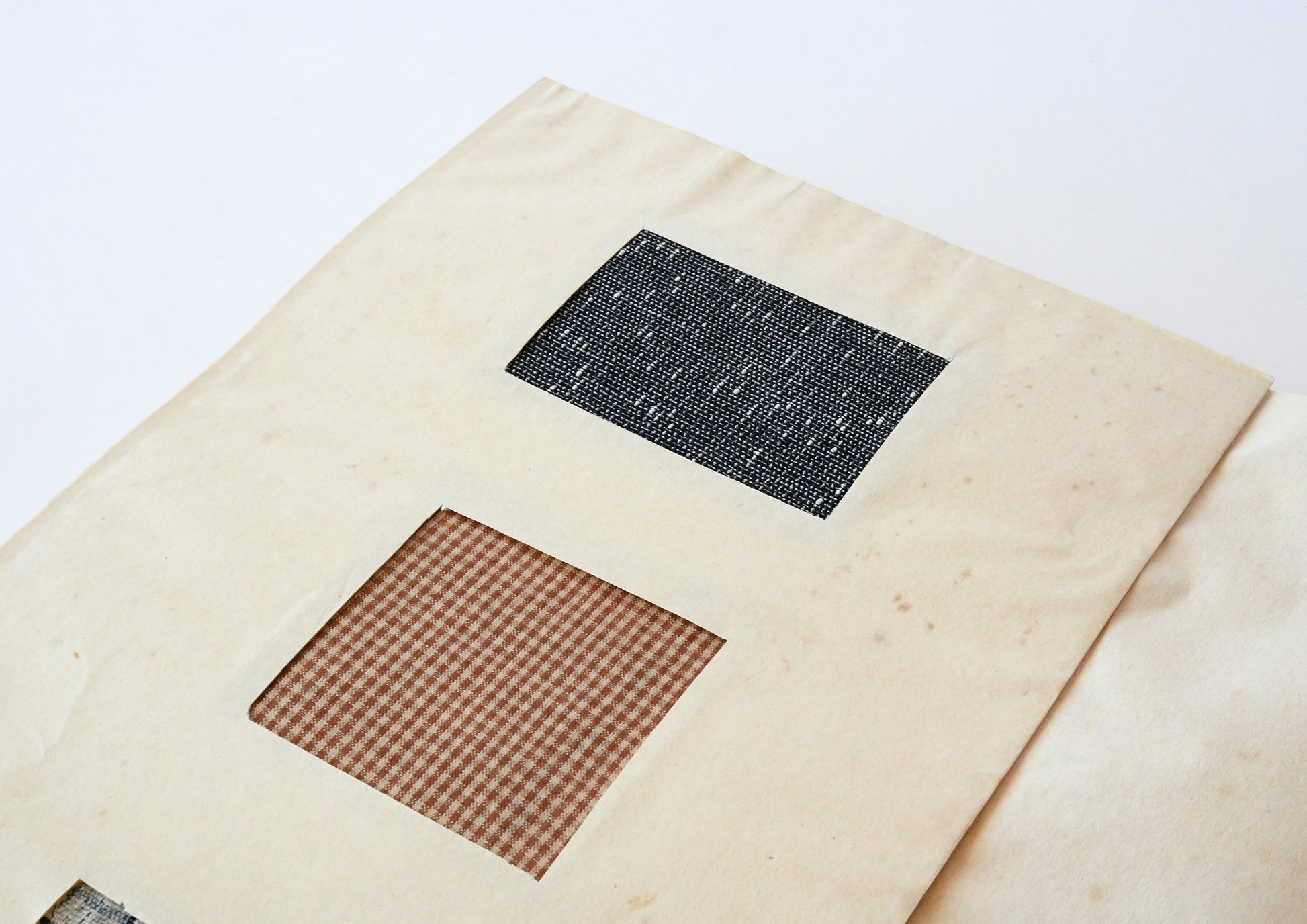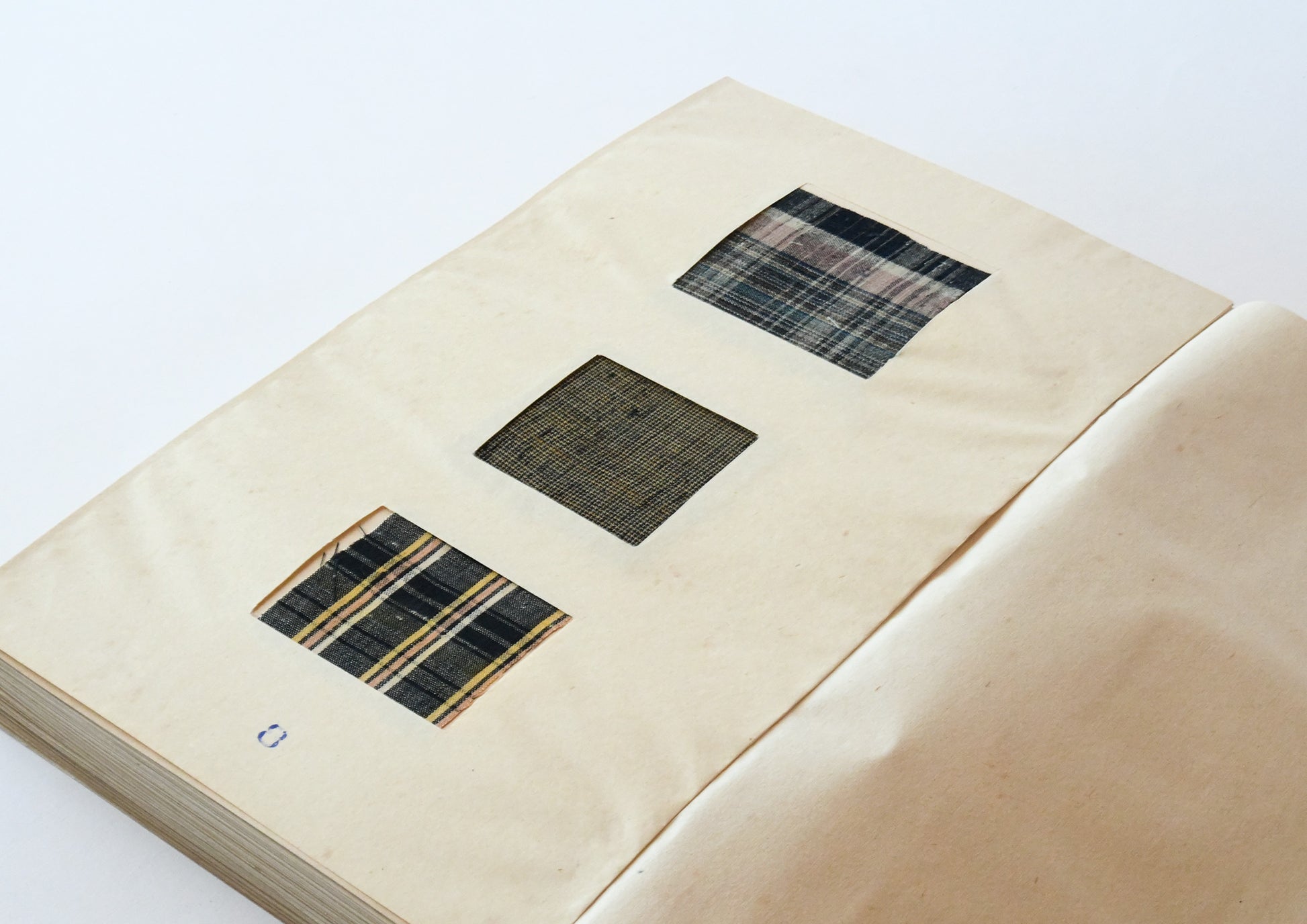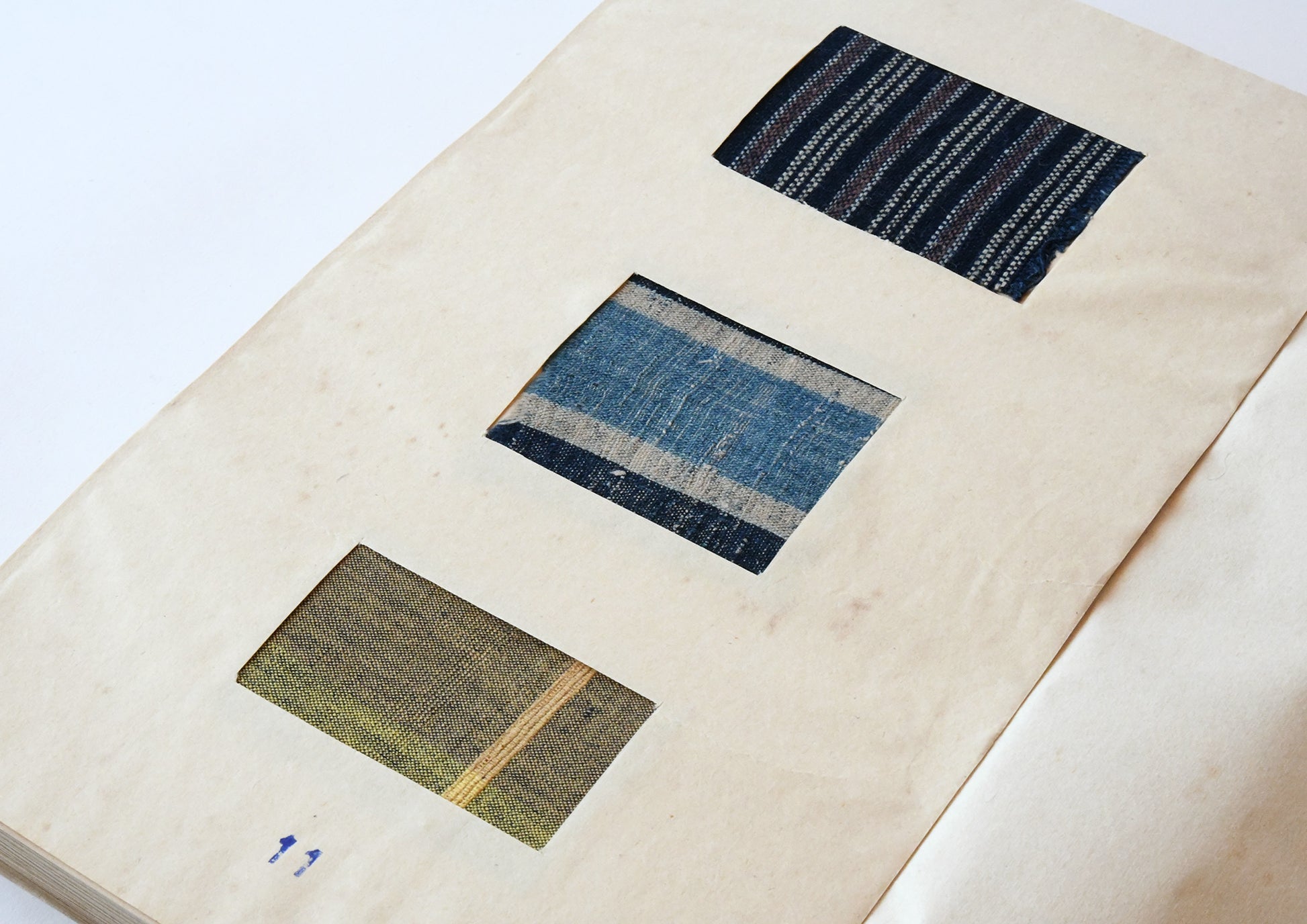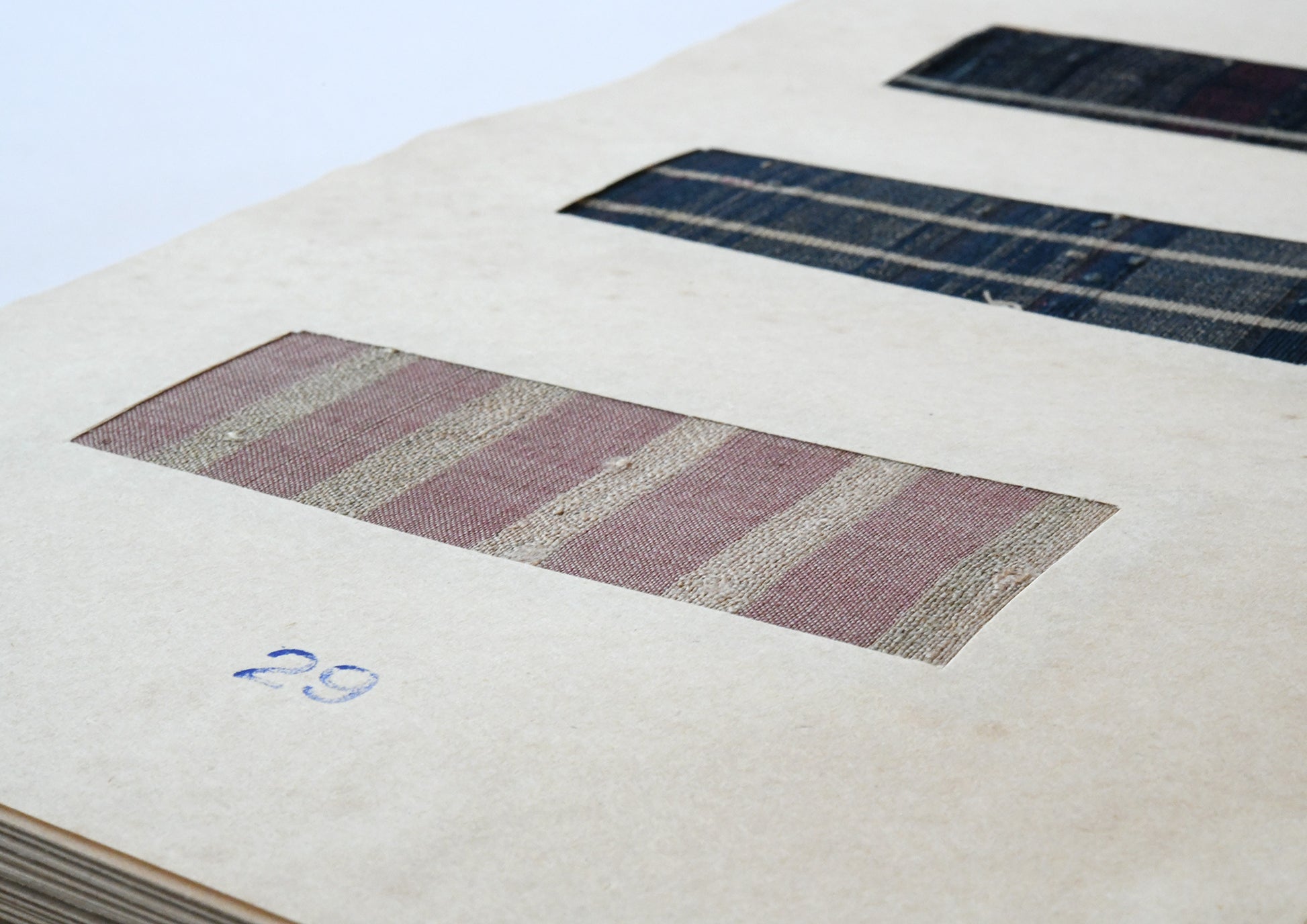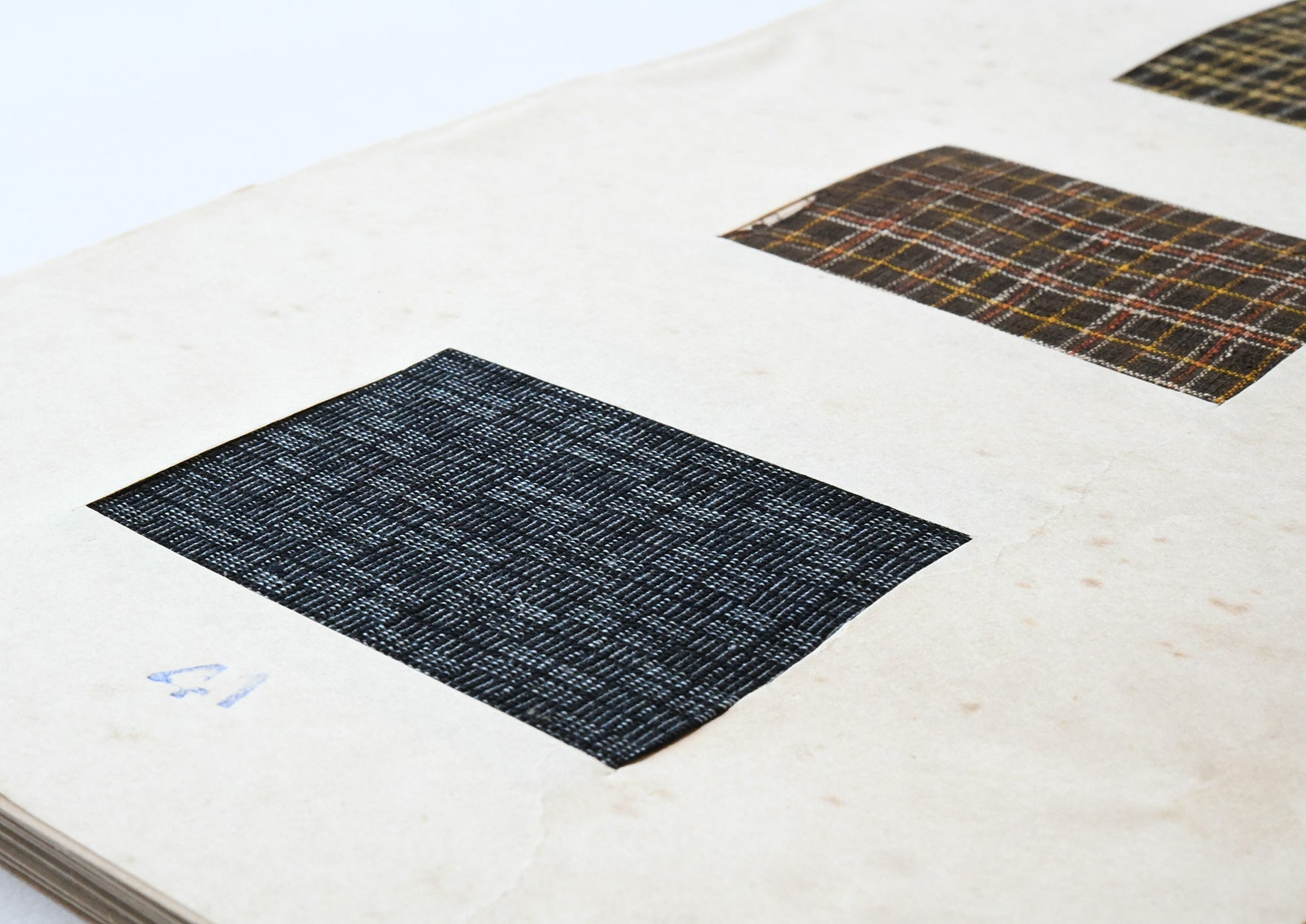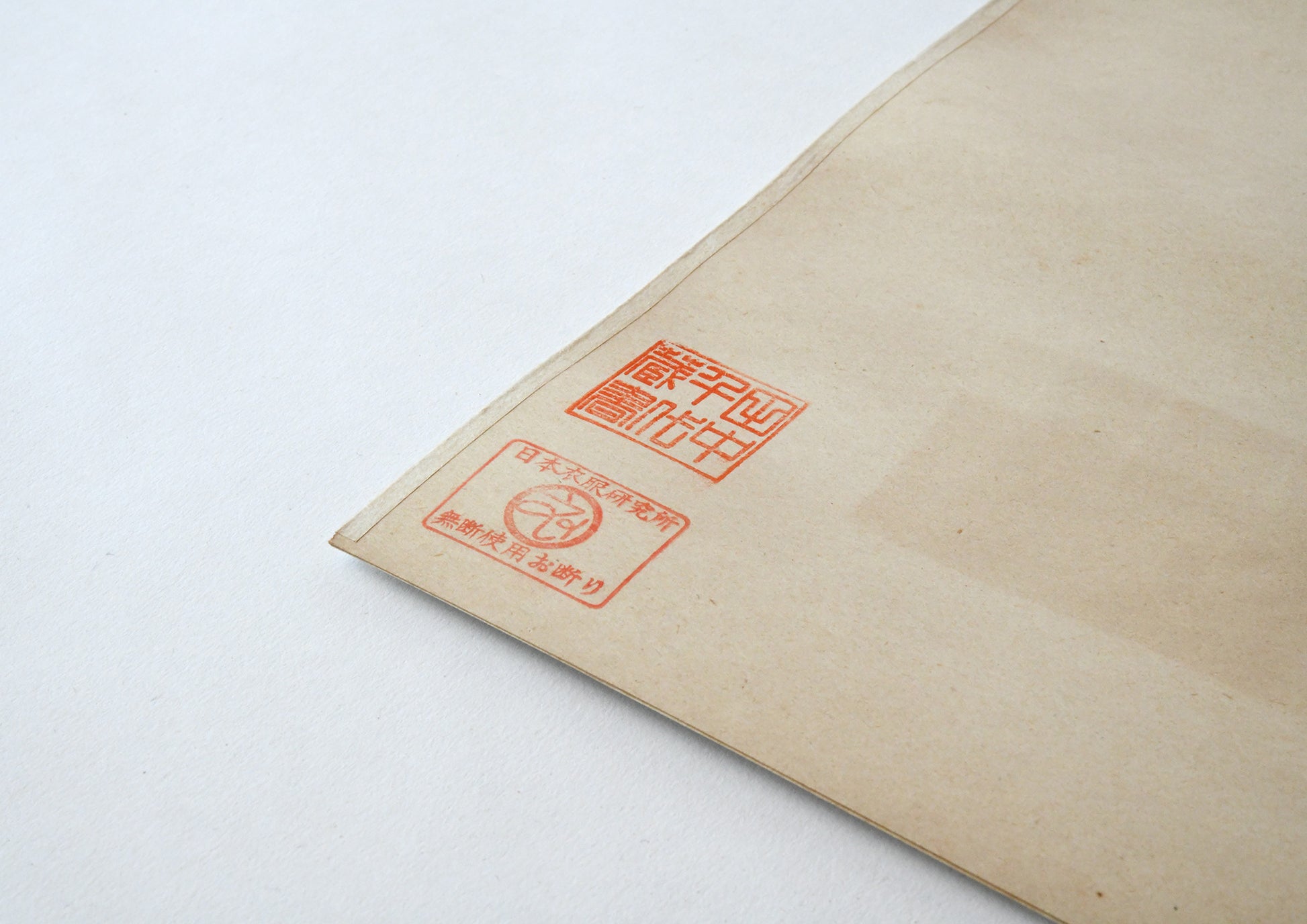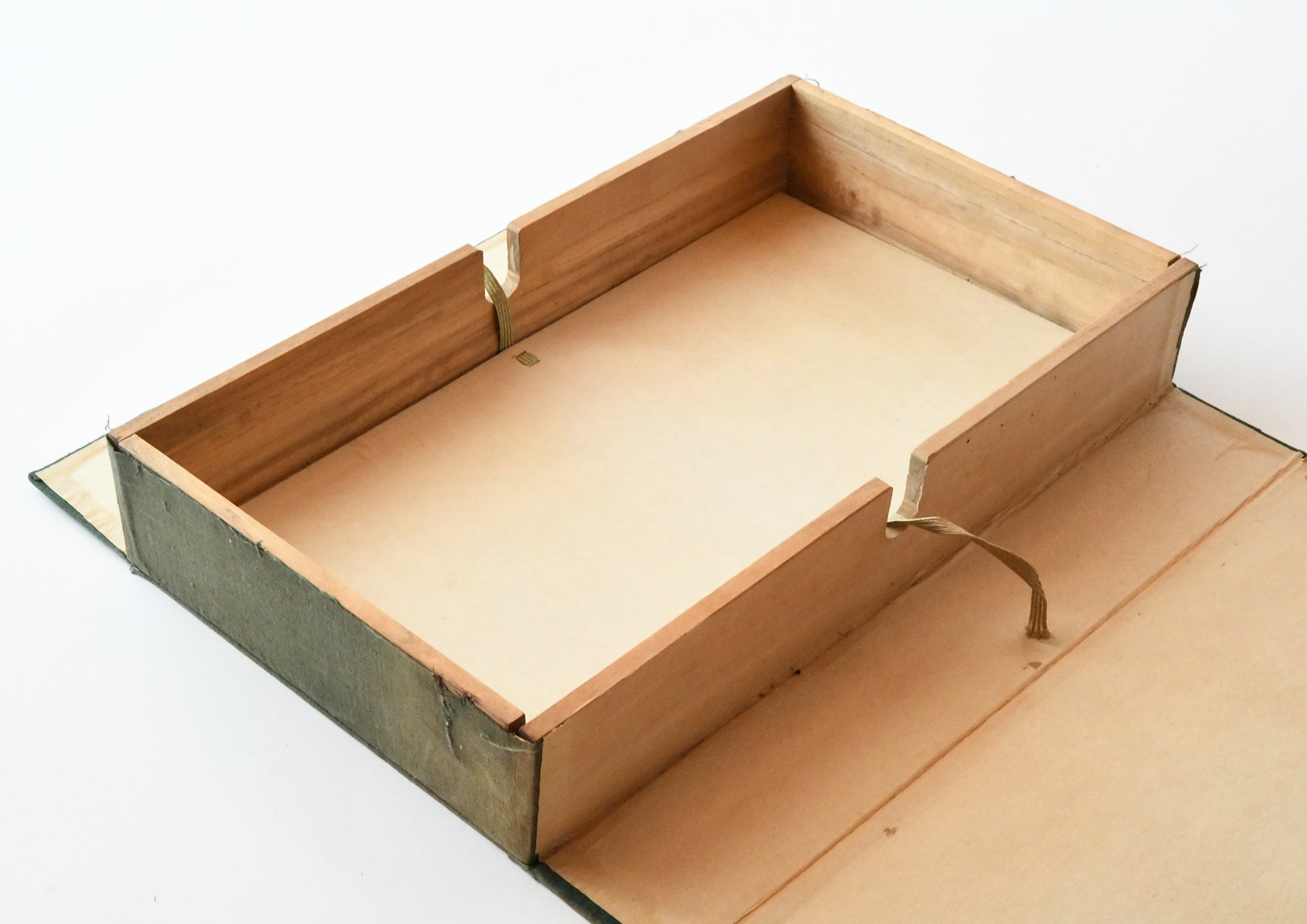Compilation of ancient cotton stripes by Tanaka Chiyo
Bibliographic Details
- Title
- 古代裂木綿縞類纂(こだいぎれ もめんじま るいさん)
- Artist
- 田中千代
- Year
- 1940年頃「類簒」完成か
- Size
- h405 × w245 × d74mm
- Pages
- 50
- Language
- Japanese / 日本語
- Binding
- 手製和紙タトウ
帙40.5×24.5×7.4cm / タトウ37.5×21cm / 古裂50mm × 70mm ~70mm × 100mmまたは40mm × 100mm ~ 45mm × 120mm内外 / 手製和紙タトウ50葉 / 和紙タトウ1葉に3点の裂現物貼付 / 裂現物全150点所収 / 日本衣服研究所旧蔵 / 全てのタトウの裏側に「田中千代旧蔵」並びに「日本衣服研究所 無断使用お断り」の朱印、旧蔵機関の除籍証明書付き
A man who knows the beauty of both the East and the West
Chiyo Tanaka's ancient textile collection
An impressive 150 items
This is a collection of 150 original pieces of ancient striped cotton fabrics that were owned by Tanaka Chiyo, the founder of Tanaka Chiyo Gakuen. The fabrics are in good condition with no signs of aging. Everything from the cloth-covered paulownia wood boxes to the washi paper tatami mats with windows cut to fit the size of the fabrics were all hand-made for this collection.
If you have an interest in old cloth, you may think of "Shimacho," a collection of cotton stripes. In the farming off-season, women in rural areas who wove cotton cloth for daily use would painstakingly paste small scraps of cloth one by one onto handmade books to remember the patterns. "Shimacho" has a simple character, but in stark contrast to it are "Ancient Slit Cotton Striped Ruisan."
Although it is a collection of striped and checkered fabrics like the typical "Shimacho," Ruisan has a certain air of luxury.
The first difference between this and the "Shimacho" is that it is colorful. Bright greens and purples, pale oranges, various beiges, and soft pinks are eye-catching. The "Shimacho", which is dominated by a deep indigo blue, can be perceived as dark and heavy, but the impression given by the "Ruisan" is elegant and light.
One of the characteristics of these kimonos is that they often feature unusual patterns such as diagonal checks and wavy patterns that are not often seen in other kimonos. The complex weaves that make these patterns possible also convey the high quality of these items.
Another characteristic is that there are many large patterns, and judging from the impression given by the colors and patterns, it is likely that a considerable number of vintage textiles from overseas are mixed in.
The former owner, Chiyo Tanaka, was the chairman of the board of directors of the Tanaka Chiyo School of Fashion (now the Tanaka Chiyo School of Fashion).Shibuya Fashion & Art College), the founder of the Japan Clothing Research Institute. Born in 1906 into a baronial family who would later become the Minister of Foreign Affairs, she was apparently familiar with Western clothing from an early age. From 1928 to 1930, she traveled to Europe and America, including London, Paris, Cologne, and New York, with her husband, an economic geographer, and studied fashion design under professors who were descended from the Bauhaus, before returning to Japan. Tanaka Chiyo also had a strong interest in ethnic costumes from an early age, and after returning to Japan, she made inspection tours to Indonesia, East Africa, and South America on behalf of the Ministry of Foreign Affairs and the Ministry of Commerce and Industry (1938 and 1940). The Japan Clothing Research Institute, which was established in 1940, was also an affiliated institute of the Fiber Science Research Institute, Faculty of Science, Osaka University.
Judging from the library stamp, this item was given its current appearance after 1940. If so, it can be considered a collection of ancient fabrics collected during an inspection tour between 1938 and 1940, but I thought again that Tanaka, being an academic, would have given it a more descriptive title.
Chiyo Tanaka, who studied cutting-edge Western fashion at a time of great change in women's fashion, was a rare woman who also had a deep knowledge of ethnic costumes. There must have been selection criteria that only Chiyo Tanaka could have had for the 150 ancient striped and plaid textiles she has selected from Japan and abroad.
This is a beautiful and enjoyable collection even just to look at as objects, but the joy of unraveling the reasons why each piece was chosen, which may still be hidden in each piece, remains for future owners.
Text by Masago Sato

